#wax anatomical model
Text
Split
Split – Portland stone – 2019
In 2019 I made this sagittal section of a human head in Portland stone in the tradition of last century’s wax anatomical models.
View On WordPress
0 notes
Text
0 notes
Photo




Emil Melmoth's wax anatomical models
#emil melmoth#wax artist#dark art#dark aesthetic#gore#anatomical#anatomical model#sculpture#3d sculpting#sculptor#anatomical sculpture
21 notes
·
View notes
Text




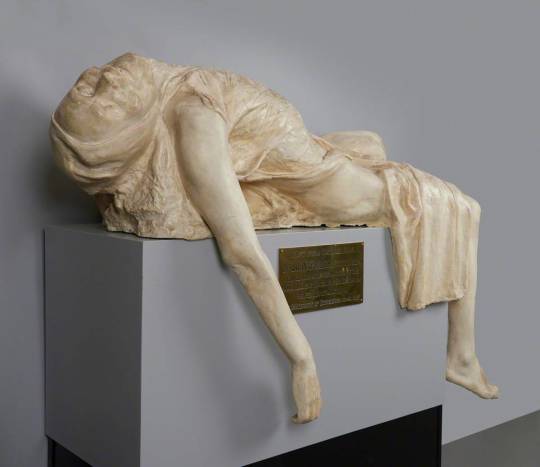

"From Nature" made for John Goodsir
9 notes
·
View notes
Text
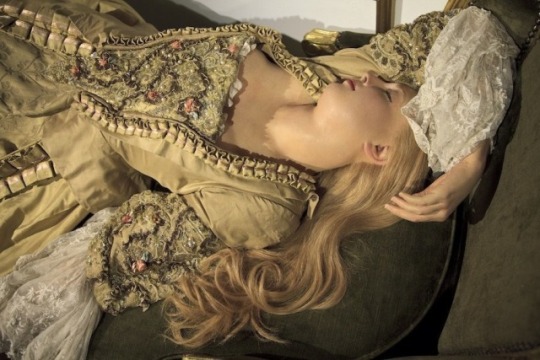

3 notes
·
View notes
Text


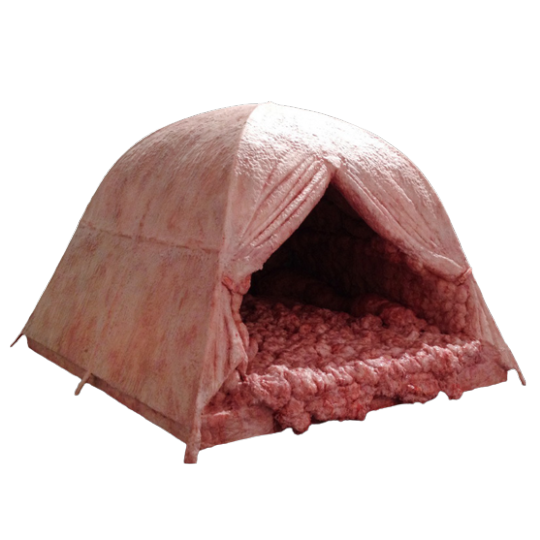
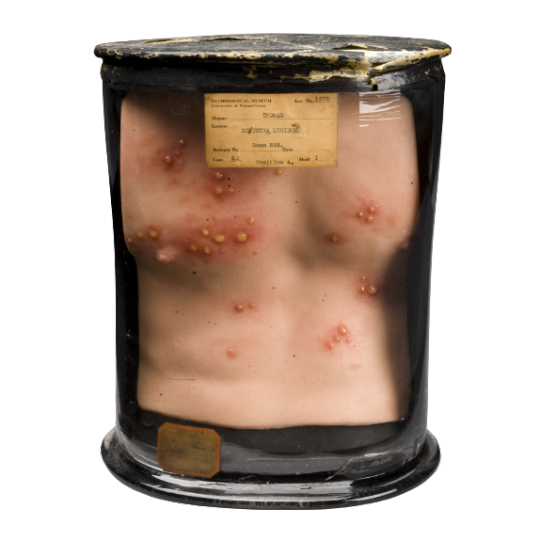

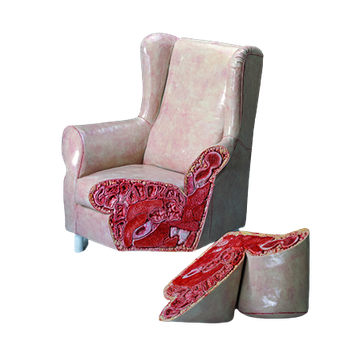


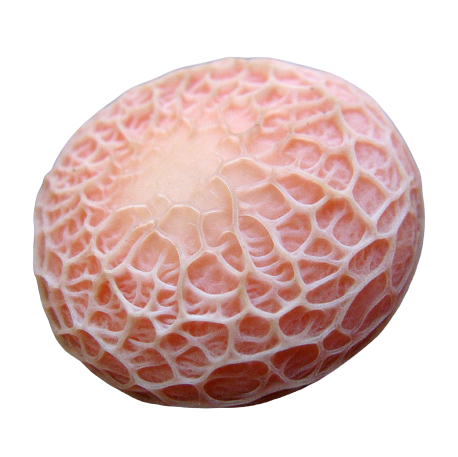
Random PNGs, part 157.
(1. Cell cluster, 2. Sculpture by Jessica Stoller, 3. "Fleshy Intestine Tent" by Andrea Hasler, 4. Wax anatomical model of thorax, 5. Eye glass marble, 6. "visual temperature - sofa no.2" by Cao Hui, 7. Finger lime, 8. Painting by Fábio Magalhães, 9. Rhodotus Palmatus mushroom)
1K notes
·
View notes
Text
How to Make Replicas of Your Own Teeth:
A Cosplay Toothtorial

This is a method to safely use a molded mouth guard to make duplicates of your own teeth without destroying a potentially expensive piece of dental equipment. Everything that goes into the mold—clay and mold release aid—must be nontoxic/edible so you can wash your mouth guard at the end of the process and continue to use it as normal.
Benefits: No mold-making or casting experience required
Lightweight end result
Adds a truly personal touch to your project :)
Downsides: Must own a molded mouth guard/retainer
End result can be fragile and needs proper sealing for durability
Supplies
Molded mouth guard/retainer (referred to as “mold” from here on)
Cornstarch
Soft/fluffy brush
Non-toxic white air dry clay (I used Crayola Model Magic)
Craft knife
Jewelry wire (I used 20 or 22 gauge)
Pins/yarn needle/any various household implements you can sculpt or smooth small details with
Acrylic paints and a variety paint brushes
Clear glossy top coat (I used Mod Podge (satin) and UV Resin)
Prep
Brush or otherwise clean your mouth guard if you haven’t already, especially if there’s build-up.
If you’re using your container of cornstarch for cooking, set aside a small container specifically for crafting. No accidental cross-contamination here!
Dip your fluffy brush into cornstarch and brush into your DRY mouth guard. Lightly coat the entire mold and distribute any clumps. This coat of cornstarch will make it easier to remove your teeth from the mold.

Molding
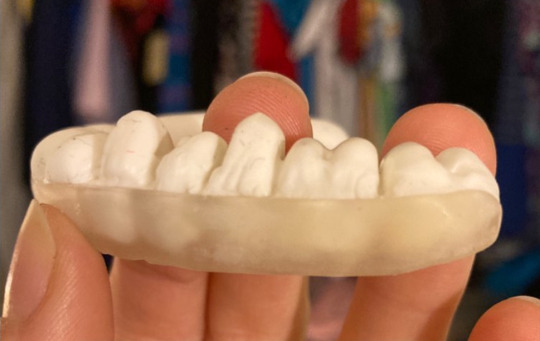
Firmly press clay into the mold so that approximately half is in the mold, half is sticking out for root sculpting. Make sure there are no air pockets or you won’t pick up the details.
Use detail scissors/craft knife to cut away excess material and indent to mark out the divisions between teeth as visible on the gum lines (see above)
Reference a tooth diagram like the one below and separate out the roots for each tooth. Front teeth tend to have 1 leg, middle teeth have 2 legs, and some molars have 3+. I personally found that my limit was 2 roots. Sculpting 3+ roots on a single tooth was more difficult and more fragile than anatomical accuracy was worth.
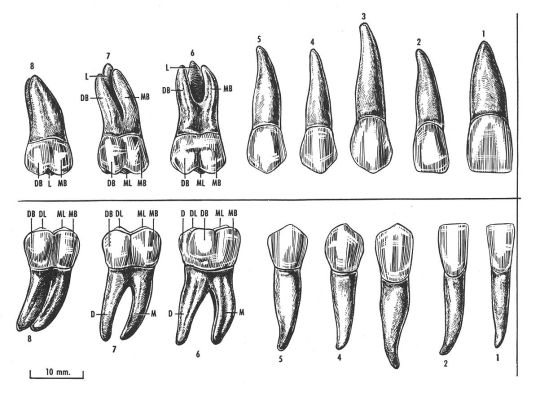
Demolding
You can demold immediately after sculpting or wait up to an hour. The faster you remove the teeth, the easier they are to reshape. The longer you wait, the more they resist unintentional denting BUT the more touch-ups you'll have to do to clean the edges between teeth.
Gently lift the full row of teeth from the mold. If it won't release when you tip the mold or or push at it, try using a pin to stab one of the end teeth and use that to pry up the teeth. The rest of the row should follow. If they don't, try repeating for the other side. If they're still not lifting, set aside to dry and try again ~15-30min later.
Gently cut apart the u-shape into individual teeth.
Press raw cut edges in and smooth with various tools, like a yarn needle. Use a craft knife to help trim off any excess clay.

Touch-ups
In the case of air pockets or if you accidentally remove a root, wet some clay and use a very small amount to fill in gaps or add on roots. Don't forget the water! It makes the clay stickier and smooth out better. This is where tools come in handy, wet clay sticks less to smooth objects than your fingertips!
Once repaired, set aside any wet pieces to dry for at least 15min before doing any more sculpting work.
Set all teeth aside to dry for several hours on a wax paper or other non-stick surface. Make sure it's not textured or it will leave an imprint on your teeth!

Flaws like the chip on the top left tooth and the cracks on the middle bottom teeth are great candidates for smoothing out with a little extra clay.
**PAUSE HERE AND CLEAN YOUR MOUTH GUARD**
I personally like to rinse it out with water and clean it with a dissolving denture cleaning tablet to make sure it’s fully sanitized. It also doesn’t hurt to properly brush the mouth guard to make sure there’s no clay or cornstarch residue stuck in the crevices.
Holes
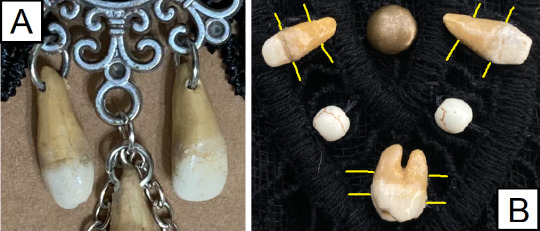
Test a tooth to check if it’s dry to the touch and doesn’t immediately deform to your touch. If it’s holding shape, you can move on.
Bore a hole into the tooth with a pin or jewelry wire. Consider how you want them to hang.
A) For the central dangling teeth on Harrowhark’s choker, I punched holes as close to the tip of the root as possible without tears, perpendicular to the teeth so I could hang them on jump rings directly from the center brooch.
B) For the teeth intended for Harrow’s tabard, I punched two sets of holes parallel to the jaw to prevent teeth from flipping around. One set just under the tooth cap, approx. 1/8in down, and one set about the same distance from the roots.
Once a hole has been punched with a pin, wiggle it around a little to open the hole or thread it on a piece of jewelry wire.
Leave teeth on a piece of wax paper or strung on a thread/wire to dry for ~48hr (or as recommended for your clay).
Painting/Weathering
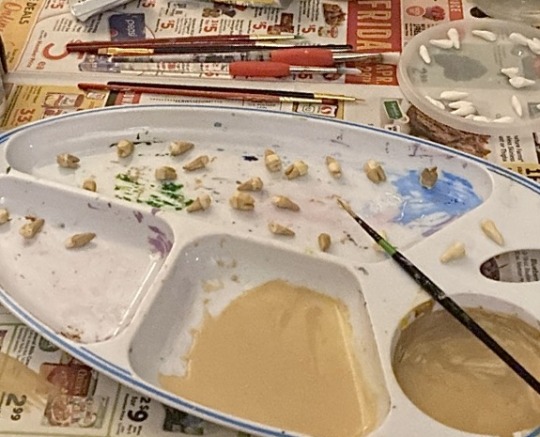
Mix a small amount of yellow-brown paint with water to create a wash (middle palette above). Paint all of your teeth with this first to establish a base color and help define any hairline cracks.
Paint with less diluted yellows and browns (right palette above).
Refer to photos like the below for reference (try searching "teeth" and "archaeology"). NOTE: The root tends to be darker and more weathered than the main tooth because it isn't protected by enamel.
Dry brush ivory or white mixed with some yellow/brown onto the tooth cap to bring out highlights.

Finishing
Your air dry clay teeth and paint job will need a top coat for protection. I highly recommend a glossy clear top coat to give the look of enamel. Below is a comparison of the two sealants I used, but there's many more options out there!

UV Resin (Left)
Pros: Harder/more durable
Cures faster
Cons: Need to work during daylight or use a UV light
Harder to get a thin even layer
Requires more set up and safety precautions
Satin Mod Podge (Right)
Pros: Can be applied with a brush
Air dries
Cons: Takes longer to dry
Teeth tend to stick together unless kept below room temp or kept from touching each other
(I solve this by storing unused beads in an old pill bottle in the fridge. Yes it's cursed and Yes I've had comments from my housemates.)
As mentioned earlier, thread teeth on a wire or pin down to dry.
This method also works well to set up for spray painting a clear coat.
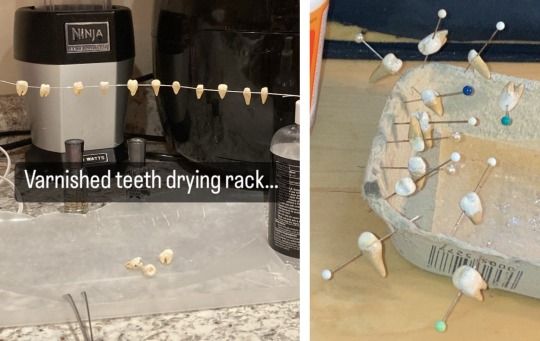
Now, go forth and enjoy everyone's reactions when you tell them that you're wearing your own teeth! :D
#cosplay#cosplay tutorial#crafting tutorial#cosplay ref#harrowhark cosplay#the locked tomb#harrowhark nonagesimus#the locked tomb cosplay#locked tomb cosplay#craftblr#tutorials#tutorial#Nymph rambles#the scraps of NoN#I'm accepting my fate to potentially be know as the Tooth Harrow to a swath of people slkdfskljfsdlf#teeth#cw teeth#juuuuuust in case
109 notes
·
View notes
Text
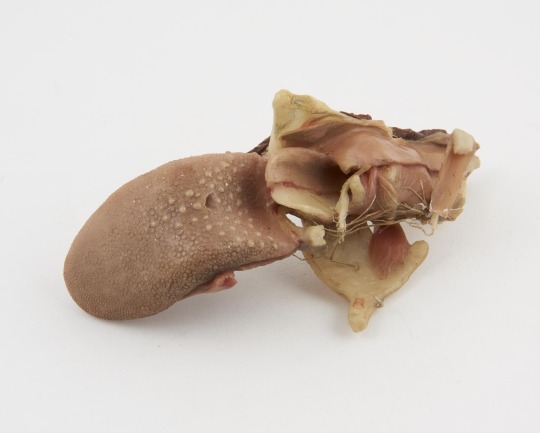
Wax anatomical model of human tongue, showing internal structure, German. 19th century
Science Museum
199 notes
·
View notes
Text
i'm glad i'm not just seeing things bc literally how did disney think that looked okay, let alone worthy of being THE promotional image they open with. here they've been for years now waxing poetic about the unmatched technical capabilities of their ubermodern cg, the renaissance-tier anatomical knowledge of their modelers, the animal psychology aficionados among their animators, the unmatched prestige of their artwork, and then they shuffle out a stuffed animal with a broken leg and call it The Next Big Thing. i might die of a brain aneurysm
#the lion king#tlk#disney#beck yammers#rhetorical q: dont answer ''how'' we all know the answer pls dont tell me lmfao#also as others have pointed out: which lion even IS that#kiara? mufasa? taka??? we can't tell!!!! hmm if only those characters had unique designs you could recognize from silhouette alone
7 notes
·
View notes
Text
One last Malta-related post to bore you all before I finally move on to other topics:
A favorite pastime of mine when I have the chance to travel is to search out small museums, ones that are "off the beaten path" and not thronged by tourists at every hour of the day. This has had some wonderful benefits--I'll never forget, for example, perusing the wax anatomical models at the Museo "La Specola" in Florence, or the Arabic decorative tiles at the Leighton House in London. In that tradition, I wanted to let you know that if you ever have the chance to visit Malta, do not miss the Malta Postal Museum.
I freely admit that I was unsure whether it would be worth the time: "A museum about the history of postage and the postal service? In a country with a population of half a million? Why bother?" I'm so glad I overcame my hesitations. The museum's stamp collection traces the entire modern history of the Maltese archipelago, from the very first halfpenny stamps issued early in Queen Victoria's reign to celebrations of the papal visits in the 2000s, and is fascinating in itself; but what really makes the museum worthwhile is its illustrated tour of how "the mail has gone through" under different occupiers (the Knights of St. John, the French, the British) and under the most trying of circumstances (naval blockade, plague outbreak, wartime censorship). Short, well-produced films help illuminate the many letters in the collection and don't shy away from some of the more unpalatable aspects of Maltese history, such as the British haste in June 1940 to intern anyone suspected of pro-Italian sympathies, a policy that (as so often in wartime) ran roughshod over civil liberties. More than just a history of the post, it's a unique window on the broader history of Malta, reminding us that even something as humdrum as delivering the mail on time can be an essential part of social infrastructure.
Anyway, I'll stop rambling now. But seriously, if you ever find yourself in Valletta, the Malta Postal Museum should definitely be on your itinerary.
#personal#travel#traveling#travelling#museums#Valletta#Malta#Malta Postal Museum#neither rain nor snow nor sleet nor gloom of night...
51 notes
·
View notes
Text
Currently preparing my bags for my trip to Bologna and I am just. So. So damn excited about it.
I know I mostly picked the city because it is close to Budrio (and thus the international ocarina festival), but the more I look into it, the more excited I get, because there is. A lot of cool stuff to see there
... I may have gotten excited about the historical anatomical wax models museum okay 🫀
#also the music library and museum looks rad#barks.txt#the food was also a given bc it's Italy but apparently it's ESPECIALLY a given in Bologna
6 notes
·
View notes
Text

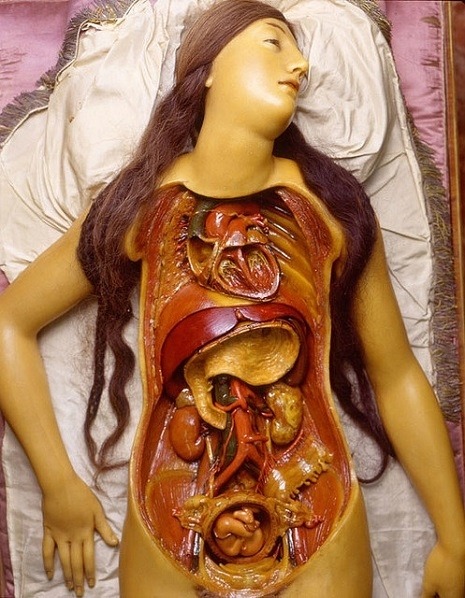

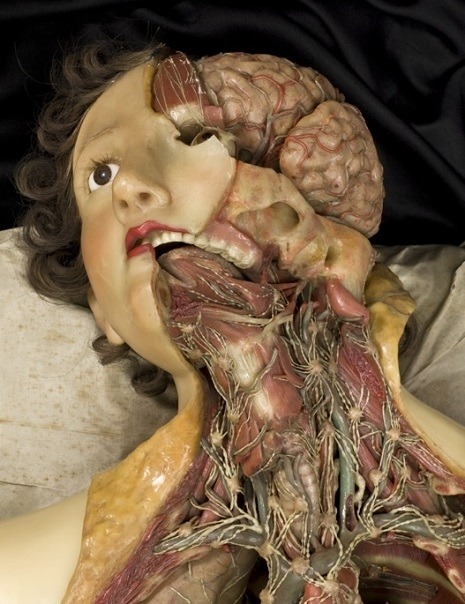
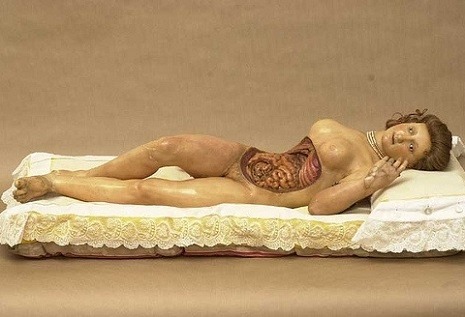
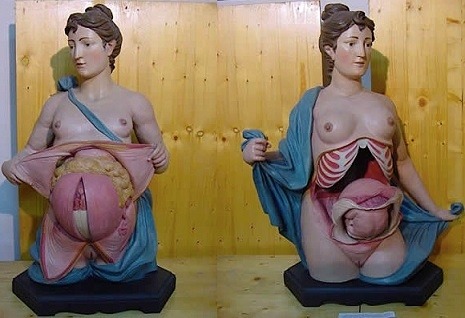


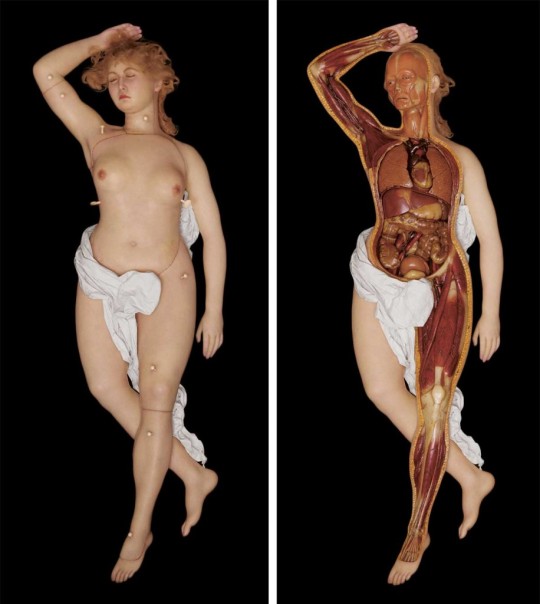

The Anatomical Venus
Between 1780 and 1782, Clemente Susini created the Anatomical Venus. She was conceived as a way to teach anatomy, cadavers being in short supply for reasons of medical ethics, rather than any shortage of death. Lifesize and made of wax, her prettiness is self-evident, and in case you missed it, adorned with a string of pearls. Her eyes are dead, unmistakably and her hair is real human hair. She is fashioned of seven anatomically correct layers, which the keen student can pull apart, ending in a teeny foetus curled in her womb.
It is genuinely difficult to pinpoint how unsettling it is, what an act of violence has been perpetrated by the accuracy of the rendering. There seems to be something blasphemous, inhumane, in creating a corpse and trying to beautify it – or rather, in considering beauty to be a necessary trait in an anatomically accurate dead body. In taking beauty to be such a critical component of womanhood, it misses, and seals in wax its own misapprehension of, what beauty is. Attractiveness and life are indivisible: there is nothing in natural life that is prettier dead than alive.
Necrophilia is a taboo for a reason. It is not what it says about, or does to, the corpse that makes it aberrant to desire it. It is what it says about your desire for women en masse, that you could see the appeal of a dead one: it is the logical end point of objectification, perceiving the physical traits to be so important that they continue to entice even after the life to which they were attached has been extinguished.
Joanna Ebenstein’s sumptuous and therefore even more disgusting book is fascinated by this era, in which “the study of nature was also the study of philosophy”; in which a body created for medical purposes could also be read as a work of art. Perhaps it is so horribly magnetic for purely anachronistic reasons: we are so used to the separation of body and mind, science and philosophy, that when we see that separation elided we cannot help but read in some insult to the spirit to see it reconnected with its own internal organs.
The aesthetics of anatomical drawings and models had been prized for some centuries before Demountable Venus, on the basis that, in order to be interested in the inner workings of the human body, men must be seduced by it. “Anatomy,” wrote Andreas Vesalius in 1543, “is an important part of natural philosophy; since it embraces the study of man and must properly be regarded as the prime foundation of the whole art of medicine and the source of everything that constitutes it.”
It is interesting to consider that the body – its nuts and bolts, the raw mechanics of it – had by this point long been considered a proper subject for artists. Leonardo da Vinci had dissected more than 100 bodies himself earlier that century, and a younger artist, Michelangelo Buonarroti, accepted a commission from a church for which he was paid in corpses.
Naturally, though, there is a piquancy to the female cadaver, not simply because of these hideously orgasmic expressions juxtaposed against intestines. It is a given that a woman’s body will be dismembered by life, and only by good fortune, put back together again. (The simplest for-instance: after a friend had a caesarian, her husband said, “I’ve seen a part of my wife no other man will ever see. Her kidneys.”)
In so many of these figures, almost all of them pregnant, the woman’s face is so idealised and the foetus so carefully rendered that she looks like the doll, and the baby like the human. The idea that beauty doesn’t simply cling on past the end of life, but is actually intensified by death, is explored by increments, so that Edgar Allan Poe’s contention that “the death of a beautiful woman is, unquestionably, the most poetical topic in the world” slips, tracelessly, into historian Philippe Aries’s, that “the dead body becomes in its turn an object of desire”.
The Anatomical Venus is literally uncanny, by Freud’s definition (borrowed from Schelling), “everything that was meant to remain secret and hidden has come into the open”.
https://www.google.com/amp/s/amp.theguardian.com/artanddesign/2016/may/17/anatomical-venus-anatomy-human-biology-joanna-ebenstein-books
102 notes
·
View notes
Photo

The Temptation of St. Anthony. https://www.etsy.com/listing/229518010
0 notes
Text
Starting over fresh!
You need to be 21+ to interact with this blog.
ABOUT
I’m a man in my late 20s. My pronouns are he/him.
Bisexual + T4T ♡
I won’t tag anything. I block liberally. Don’t reblog any of my personal posts please.
My favorite things are:
Fisting
Leather
Pumping
Forced intoxication
Bulges
Wax anatomical models
2 notes
·
View notes
Text

•Anna Morandi Manzolini• was an anatomist and anatomical wax modeler and lecturer of anatomical design at the University of Bologna.
17 notes
·
View notes
Text

Wax model of a decomposing body in a walnut coffin, Italy, 1774-1800: The body in this wooden coffin is in a severe state of decomposition. It may have had two purposes: as ‘memento mori’, a reminder of death, or as a teaching aid. The figure is surrounded by three frogs. Frogs are symbols of rebirth and regeneration because they change so much in their lifetimes. Wax modelling was used in Europe to create religious effigies. From the 1600s, they were also used to teach anatomy. The creation of wax anatomical models, centred in Italy, was based on observing real corpses. The museum known as La Specola, or ‘the observatory’, in Florence was famous for its wax collection.
7 notes
·
View notes